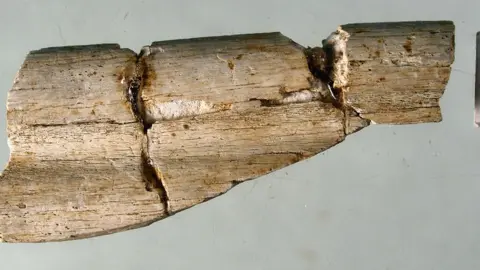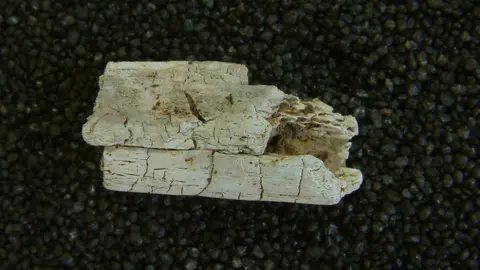Durham archaeological dig reveals 'earliest resident'
 Durham University
Durham UniversityRemains found during a dig in Durham have revealed what is believed to be the city's earliest known resident.
Archaeologists from the university unearthed the bone fragments while excavating a city centre site where student accommodation was being built.
Radiocarbon dating has now shown they date to between 90BC and AD60.
Described as "very significant", the bones add to a growing body of evidence there were settlers in the area in the Iron Age and Romano-British periods.
 Durham University
Durham UniversityMost of the identifiable bone, found in a site off Claypath, came from a skull, with parts of a radius and tibia also recovered.
Experts were able to establish they belonged to an adult who had been cremated, but could not determine their age or sex.
As well as evidence of the Iron Age cremation, archaeologists found items from medieval rubbish pits and 18th Century street-front buildings.
 Durham University
Durham UniversityNatalie Swann, a senior archaeologist at Durham University, said: "Although we knew when we discovered the bones that they'd been cremated, we couldn't be sure they were human until we tested them in the lab.
"When we got the radiocarbon dates back, we were all very surprised to find how early they were.
"This adds to our knowledge of the history of Durham, showing that people were living and dying here long before the well-known medieval occupation of the city."
 Durham University
Durham UniversityWhile the remains have been deemed too small and vulnerable to be displayed publicly, the discovery will be featured alongside other finds from the excavation in an exhibition at Palace Green Library.
Entitled "2,000 years of life at 18-29 Claypath", it runs until 1 June.
